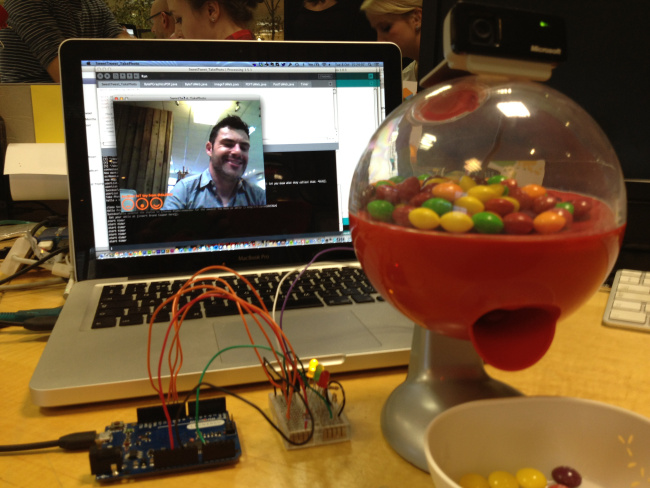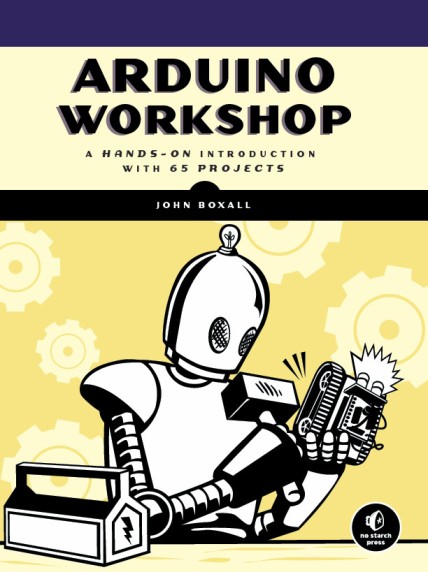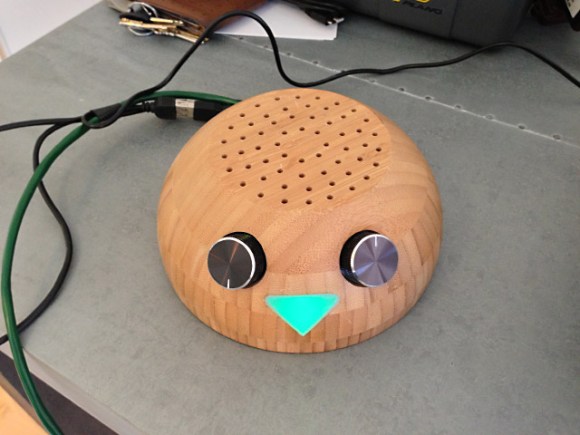Introduction
After spending almost $100 on an Arduino Yún to see what the fuss was about, it seemed like a good idea to find and demonstrate some uses for it. So in this article we’ll examine how your Yún can send a tweet using some simple example sketches – and the first of several Arduino Yún-specific tutorials.
Getting Started
If you haven’t already done so, ensure your Arduino Yún can connect to your network via WiFi or cable – and get a Temboo account (we run through this here). And you need (at the time of writing) IDE version 1.5.4 which can be downloaded from the Arduino website. Finally, if you don’t have a twitter account – go get one.

Sending a tweet from your Yún
Thanks to Arduino and Temboo, 99% of the work is already done for you. To send a tweet requires the Arduino sketch, a header file with your Temboo account details, and also the need to register an application in the twitter development console.
Don’t panic, just follow the “Get Set Up” instructions from the following page. When you do – make sure you’re logged into the Temboo website, as it will then populate the header file with your Temboo details for you. During the twitter application stage, don’t forget to save your OAuth settings which will appear in the “OAuth Tool” tab in the twitter developer page, for example:

… as they are copied into every sketch starting from the line:
const String TWITTER_ACCESS_TOKEN =
When you save the sketch, make sure you place the header file with the name TembooAccount.h in the same folder as your sketch. You know this has been successful when opening the sketch, as you will see the header file in a second tab, for example:

Finally, if you’re sharing code with others, remove your OAuth and TembooAccount.h details otherwise they can send tweets on your behalf.
OK – enough warnings. If you’ve successfully created your Temboo account, got your twitter OAuth details, fed them all into the sketch and header file, then saved (!) and uploaded your sketch to the Arduino Yún - a short tweet will appear on your timeline, for example:

If nothing appears on your twitter feed, open the serial monitor in the IDE and see what messages appear. It will feed back to you the error message from twitter, which generally indicates the problem.
Moving on, let’s examine how to send tweets with your own information. In the following example sketch we send the value resulting from analogRead(0) and text combined together in one line. Don’t forget twitter messages (tweets) have a maximum length of 140 characters. We’ve moved all the tweet-sending into one function tweet(), which you can then call from your sketch when required – upon an event and so on. The text and data to send is combined into a String in line 26:
#include <Bridge.h>
#include <Temboo.h>
#include "TembooAccount.h" // contains Temboo account information
// as described in the footer comment below
const String TWITTER_ACCESS_TOKEN = "aaaa";
const String TWITTER_ACCESS_TOKEN_SECRET = "bbbb";
const String TWITTER_CONSUMER_KEY = "ccccc";
const String TWITTER_CONSUMER_SECRET = "dddd";
int analogZero;
void setup()
{
Serial.begin(9600);
delay(4000);
while(!Serial);
Bridge.begin();
}
void tweet()
{
Serial.println("Running tweet() function");
// define the text of the tweet we want to send
String tweetText("The value of A0 is " + String(analogZero) + ". Hooray for twitter");
TembooChoreo StatusesUpdateChoreo;
// invoke the Temboo client
// NOTE that the client must be reinvoked, and repopulated with
// appropriate arguments, each time its run() method is called.
StatusesUpdateChoreo.begin();
// set Temboo account credentials
StatusesUpdateChoreo.setAccountName(TEMBOO_ACCOUNT);
StatusesUpdateChoreo.setAppKeyName(TEMBOO_APP_KEY_NAME);
StatusesUpdateChoreo.setAppKey(TEMBOO_APP_KEY);
// identify the Temboo Library choreo to run (Twitter > Tweets > StatusesUpdate)
StatusesUpdateChoreo.setChoreo("/Library/Twitter/Tweets/StatusesUpdate");
// add the Twitter account information
StatusesUpdateChoreo.addInput("AccessToken", TWITTER_ACCESS_TOKEN);
StatusesUpdateChoreo.addInput("AccessTokenSecret", TWITTER_ACCESS_TOKEN_SECRET);
StatusesUpdateChoreo.addInput("ConsumerKey", TWITTER_CONSUMER_KEY);
StatusesUpdateChoreo.addInput("ConsumerSecret", TWITTER_CONSUMER_SECRET);
// and the tweet we want to send
StatusesUpdateChoreo.addInput("StatusUpdate", tweetText);
// tell the Process to run and wait for the results. The
// return code (returnCode) will tell us whether the Temboo client
// was able to send our request to the Temboo servers
unsigned int returnCode = StatusesUpdateChoreo.run();
// a return code of zero (0) means everything worked
if (returnCode == 0) {
Serial.println("Success! Tweet sent!");
} else {
// a non-zero return code means there was an error
// read and print the error message
while (StatusesUpdateChoreo.available()) {
char c = StatusesUpdateChoreo.read();
Serial.print(c);
}
}
StatusesUpdateChoreo.close();
// do nothing for the next 90 seconds
Serial.println("Waiting...");
delay(90000);
}
void loop()
{
// get some data from A0.
analogZero=analogRead(0);
tweet();
do {} while (1); // do nothing
}Which results with the following example tweet:

With the previous example sketch you can build your own functionality around the tweet() function to send data when required. Recall that the data to send as a tweet is combined into a String at line 26.
Please note that you can’t blast out tweets like a machine, for two reasons – one, twitter doesn’t like rapid automated tweeting – and two, you only get 1000 free calls on your Temboo account per month. If you need more, the account needs to be upgraded at a cost.
Conclusion
Well the Yún gives us another way to send data out via twitter. It wasn’t the cheapest way of doing so, however it was quite simple. And thus the trade-off with the Arduino platform – simplicity vs. price. If there is demand, we’ll examine more connected functions with the Yún.
And if you’re interested in learning more about Arduino, or want to introduce someone else to the interesting world of Arduino – check out my book (now in a third printing!) “Arduino Workshop” from No Starch Press.

In the meanwhile have fun and keep checking into tronixstuff.com. Why not follow things on twitter, Google+, subscribe for email updates or RSS using the links on the right-hand column? And join our friendly Google Group – dedicated to the projects and related items on this website. Sign up – it’s free, helpful to each other – and we can all learn something.
The post Tutorial – twitter and the Arduino Yún appeared first on tronixstuff.




















